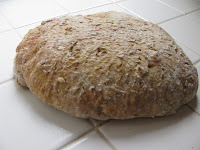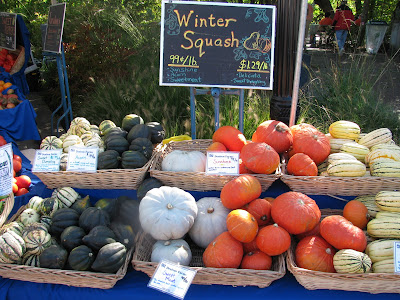 |
| Denise and I in Montana(circa 1974) |
I lay in bed in Petaluma, California, listening to the litany of dates being announced on the radio. It was August 5, 1971 and I, along with my best friend Pete, were staying at the home of his aunt and uncle, as our journey hitchhiking through the West was ending. The dates being selected randomly and broadcast over the airwaves held personal importance. It was the lottery for the military draft. The month and day of one's birth became a statistical horoscope of your near term future. There was a war in need of young men. With a draft number of 221, however, mandatory conscription and Vietnam were not in my future (though I enlisted several years later) and I was temporarily free to go about my life.
Freedom from military service was not freedom from the war. My generation were children of the war. We grew up with Vietnam in our living rooms, its warriors, arsenal, and battlefields electronically painted across television screens, sharing the ether with the banal (Bonanza) and the extraordinary (moon landings). Vietnam was an electric snake wound around every neuron of the American psyche and which fed upon the very polarity it created. Its psychic charge left little room for middle ground. It ionized the American consciousness with an air of black and white, right or wrong, for or against. This polarizing current influenced art, politics, religion and served as the topic du jour for discussions held in big city diners and small town cafes.
Perhaps nowhere was this more apparent than on college campuses. Making a few runs at college during the early seventies, (University of Utah), I found a dynamic energy where any and all topics were discussed and/or debated openly and earnestly, especially outside of class. Here were people who read, wondered, and questioned as much as I did. While attracted to this bohemian intellectual atmosphere, I was there without direction and the highway was constantly tugging at me, urging my return. One quarter after finals, I loaded up the old Chevy Impala I had recently purchased for $150 and headed to Los Angeles. After a couple weeks of visiting - including spending several nights camping in the freezing desert just north of Mexicali, Mexico, surviving the cold nights with the help of cheap tequila bought south of the border - the car's automatic transmission began to fail. I traded the car for a flute, caught a cheap flight back to Salt Lake City and continued hoboing. I worked roughnecking in Wyoming and Utah (drilling ventilation shafts rather than going for oil), as a gandy dancer(section hand) for the Denver and Rio grande Railroad, and working underground pulling copper and rail out of a defunct coal mine in Kenilworth, Utah.
Work was interspersed with periods of jobless wandering. I spent some months living in Los Angeles with my oldest sister, hanging out and experiencing people and situations far removed from the small town culture I grew up in. There were a stew of characters - ex Black Panthers, acid poets, political playwrights, students and ex cons - all mingling in the same pot, an apartment a few blocks from Los Angeles City College. Here the electric snake coiled tightly, ready to strike at the least provocation. I moved through this surreal cultural and political banquet as a tourist, tasting but not feasting on all its offerings. There was nothing to anchor me here.
Adventures came and went. Time moved in fitful spurts, dizzying one minute, with the speed and volume of life moving so rapidly it was impossible to process in the moment; and possum like the next, when, in the illusion of youth, time stood still and all eternity lay as an ocean before me, its waves lapping lazily at my feet.
Age teaches us that time is never static. Moving at Mach I or contemplating a dew drop falling from a leaf - time moves on. And so it has with me; marriage, children, degrees, work...all changing the overt appearance of the hobo life to something more...traditional? At first glance, perhaps. While marriage and children have been joyful, fulfilling experiences, I've never felt any prolonged satisfaction settling into a job or place until the farm concept began to take hold. Pulling a honey super off a hive or seeing red worms in my compost bin create the same joy I used to feel hitchhiking with the smell of sagebrush and asphalt in my nostrils.
As we mature we also learn that, other than Texas Hold 'em, few things are all or nothing, black and white. While farming stirs up a deep felt passion, I frequently lie awake at night captivated by the call of a train whistle. And though the feel of my hands deep in the soil is soothing to my soul, I still enjoy the pavement rushing beneath my feet as my wife and I head out on the motorcycle for a two hour ride or the rare multi-day tour.
The hobo lesson is this: that we are all on a journey with a beginning and an end, and we travel unaware of the joys and challenges that will face us along the way. The best I can hope for is to say, I travelled mindfully.
Freedom from military service was not freedom from the war. My generation were children of the war. We grew up with Vietnam in our living rooms, its warriors, arsenal, and battlefields electronically painted across television screens, sharing the ether with the banal (Bonanza) and the extraordinary (moon landings). Vietnam was an electric snake wound around every neuron of the American psyche and which fed upon the very polarity it created. Its psychic charge left little room for middle ground. It ionized the American consciousness with an air of black and white, right or wrong, for or against. This polarizing current influenced art, politics, religion and served as the topic du jour for discussions held in big city diners and small town cafes.
Perhaps nowhere was this more apparent than on college campuses. Making a few runs at college during the early seventies, (University of Utah), I found a dynamic energy where any and all topics were discussed and/or debated openly and earnestly, especially outside of class. Here were people who read, wondered, and questioned as much as I did. While attracted to this bohemian intellectual atmosphere, I was there without direction and the highway was constantly tugging at me, urging my return. One quarter after finals, I loaded up the old Chevy Impala I had recently purchased for $150 and headed to Los Angeles. After a couple weeks of visiting - including spending several nights camping in the freezing desert just north of Mexicali, Mexico, surviving the cold nights with the help of cheap tequila bought south of the border - the car's automatic transmission began to fail. I traded the car for a flute, caught a cheap flight back to Salt Lake City and continued hoboing. I worked roughnecking in Wyoming and Utah (drilling ventilation shafts rather than going for oil), as a gandy dancer(section hand) for the Denver and Rio grande Railroad, and working underground pulling copper and rail out of a defunct coal mine in Kenilworth, Utah.
Work was interspersed with periods of jobless wandering. I spent some months living in Los Angeles with my oldest sister, hanging out and experiencing people and situations far removed from the small town culture I grew up in. There were a stew of characters - ex Black Panthers, acid poets, political playwrights, students and ex cons - all mingling in the same pot, an apartment a few blocks from Los Angeles City College. Here the electric snake coiled tightly, ready to strike at the least provocation. I moved through this surreal cultural and political banquet as a tourist, tasting but not feasting on all its offerings. There was nothing to anchor me here.
Adventures came and went. Time moved in fitful spurts, dizzying one minute, with the speed and volume of life moving so rapidly it was impossible to process in the moment; and possum like the next, when, in the illusion of youth, time stood still and all eternity lay as an ocean before me, its waves lapping lazily at my feet.
Age teaches us that time is never static. Moving at Mach I or contemplating a dew drop falling from a leaf - time moves on. And so it has with me; marriage, children, degrees, work...all changing the overt appearance of the hobo life to something more...traditional? At first glance, perhaps. While marriage and children have been joyful, fulfilling experiences, I've never felt any prolonged satisfaction settling into a job or place until the farm concept began to take hold. Pulling a honey super off a hive or seeing red worms in my compost bin create the same joy I used to feel hitchhiking with the smell of sagebrush and asphalt in my nostrils.
As we mature we also learn that, other than Texas Hold 'em, few things are all or nothing, black and white. While farming stirs up a deep felt passion, I frequently lie awake at night captivated by the call of a train whistle. And though the feel of my hands deep in the soil is soothing to my soul, I still enjoy the pavement rushing beneath my feet as my wife and I head out on the motorcycle for a two hour ride or the rare multi-day tour.
The hobo lesson is this: that we are all on a journey with a beginning and an end, and we travel unaware of the joys and challenges that will face us along the way. The best I can hope for is to say, I travelled mindfully.








































